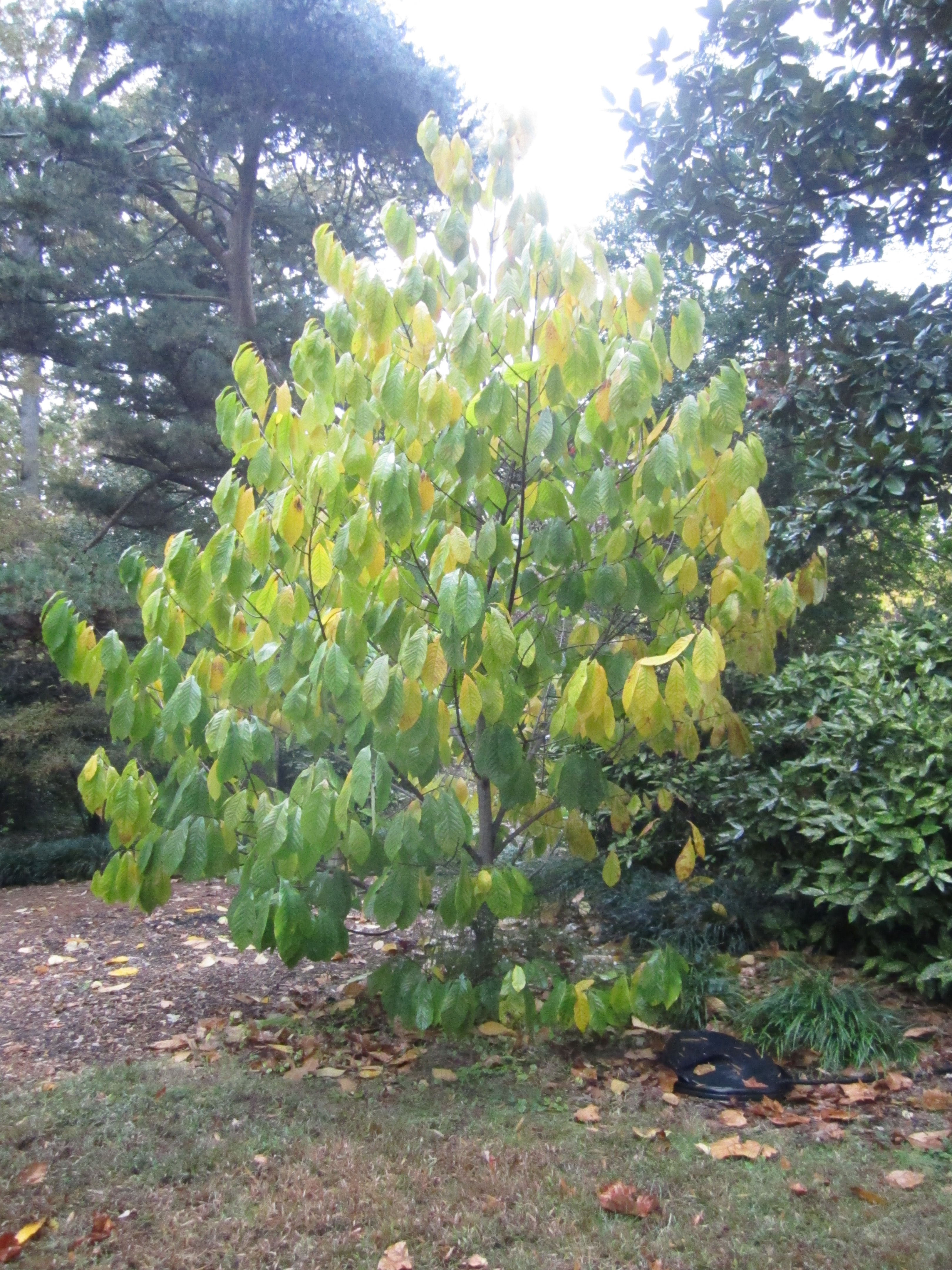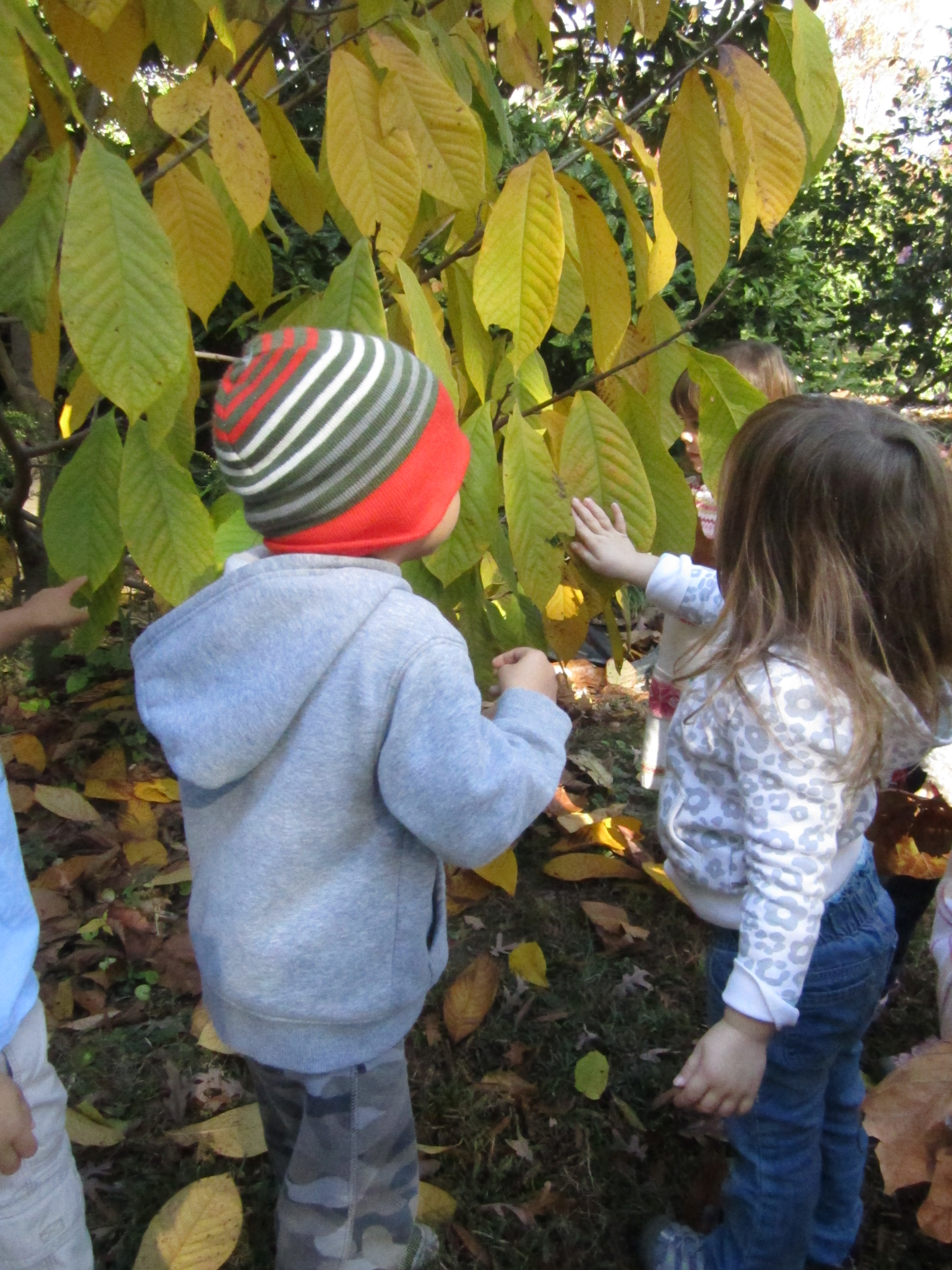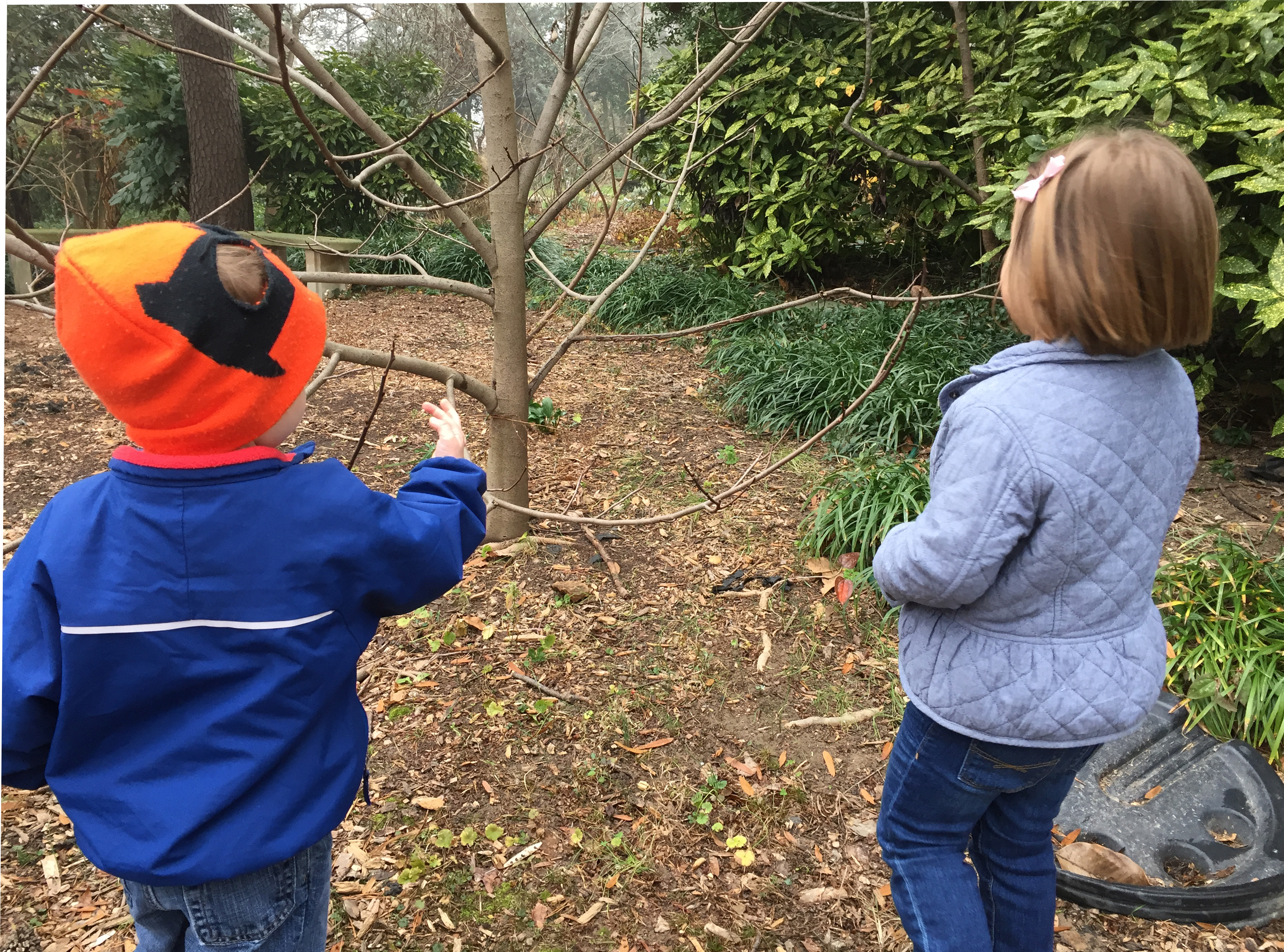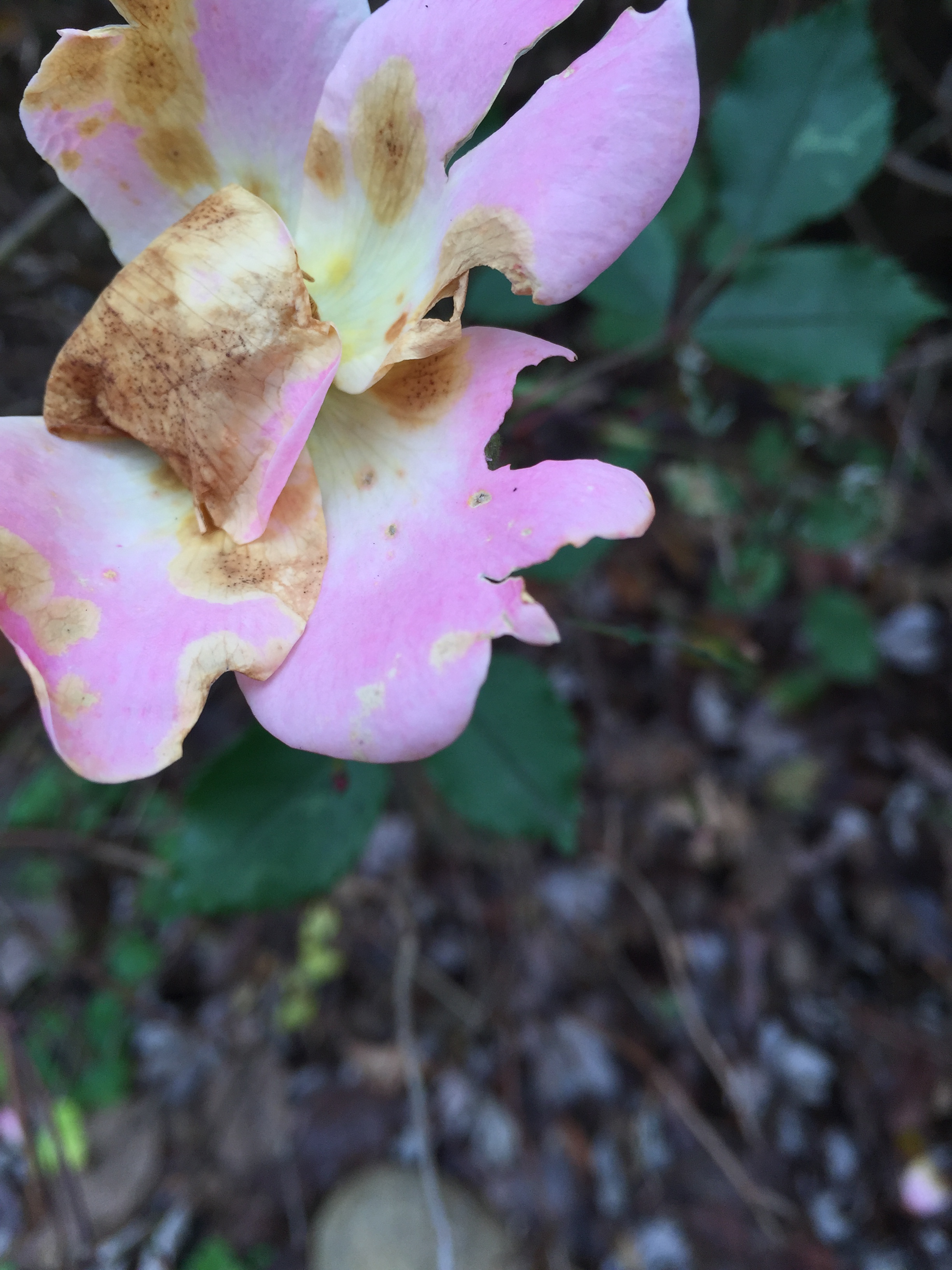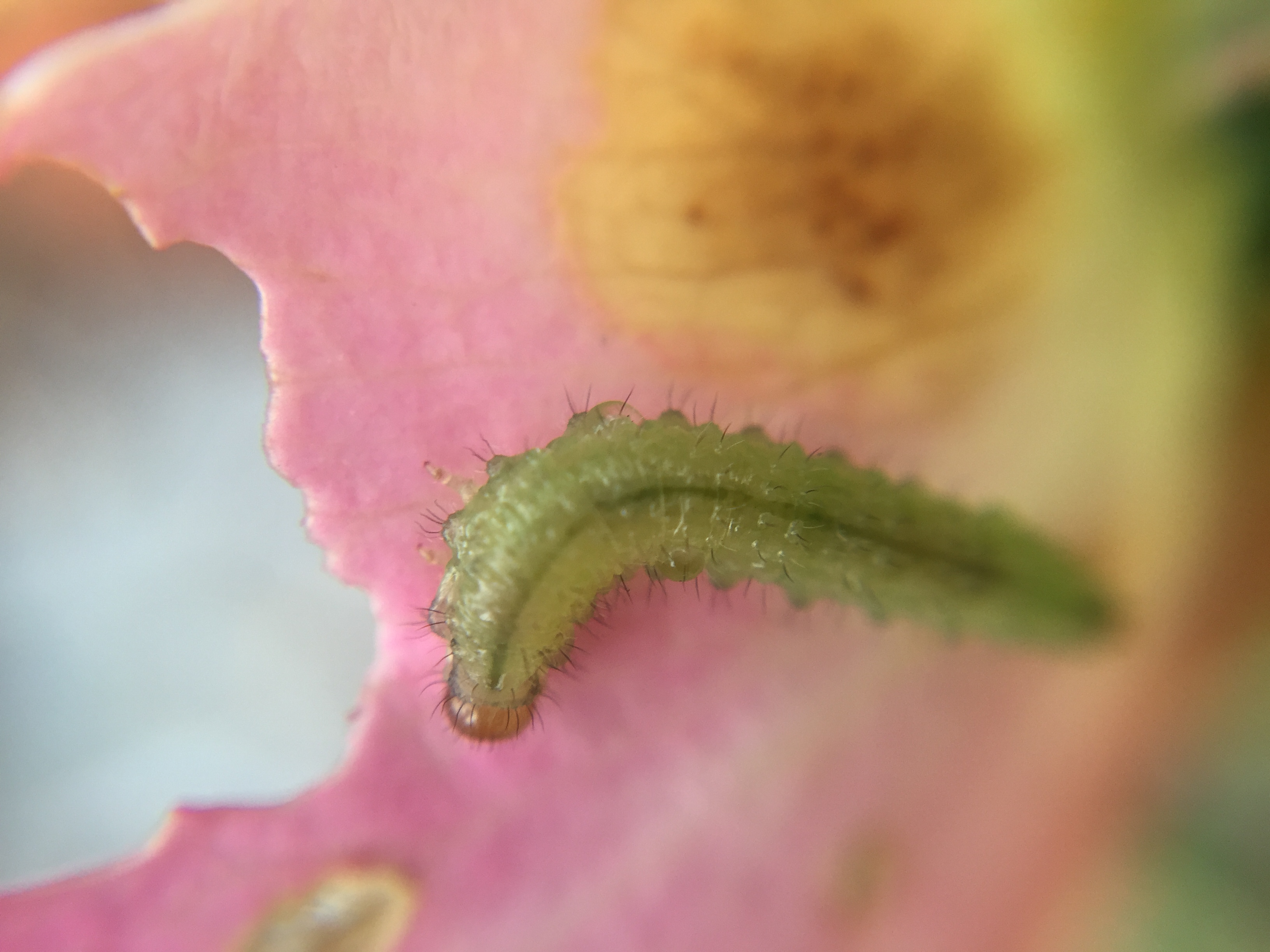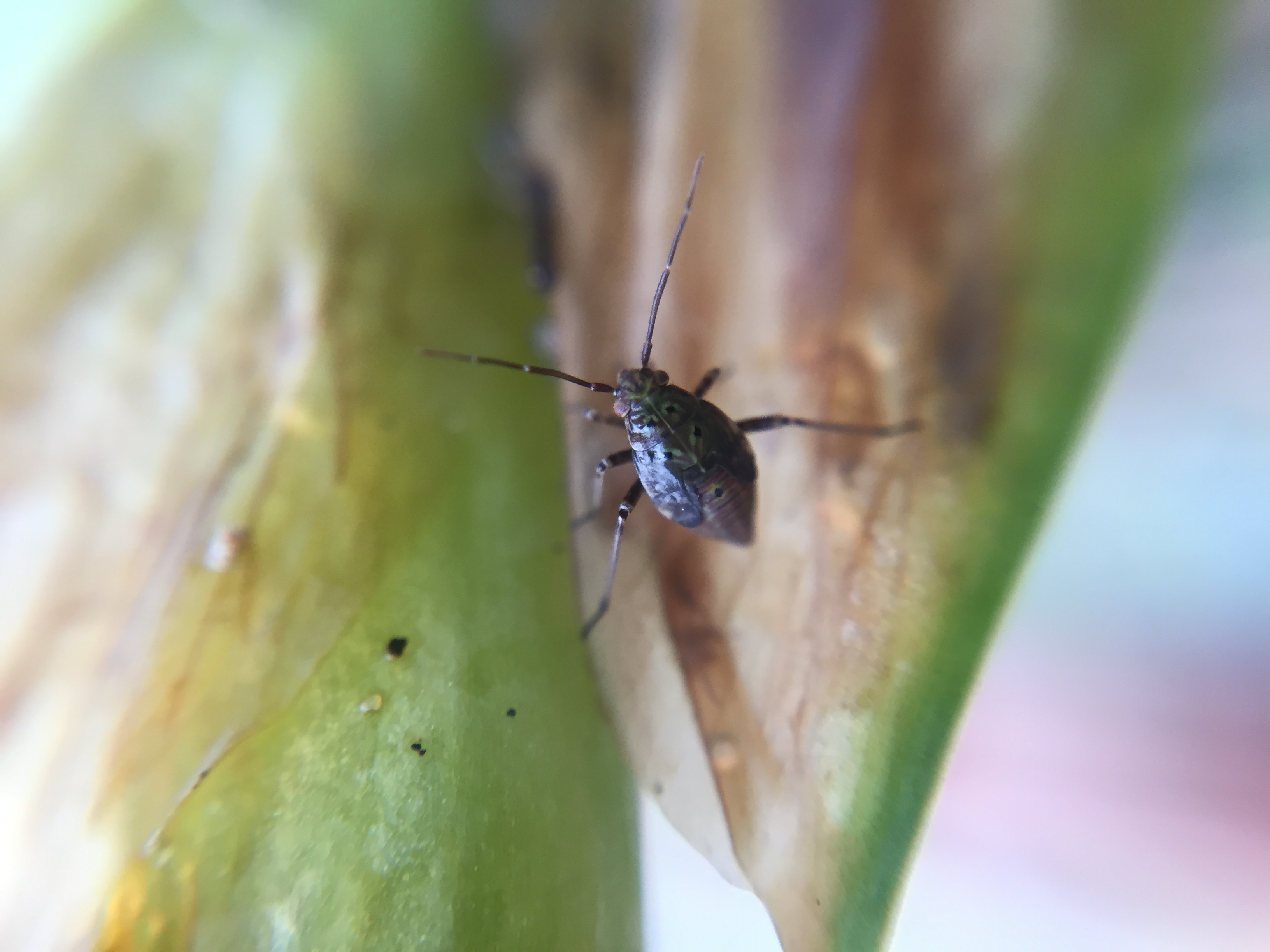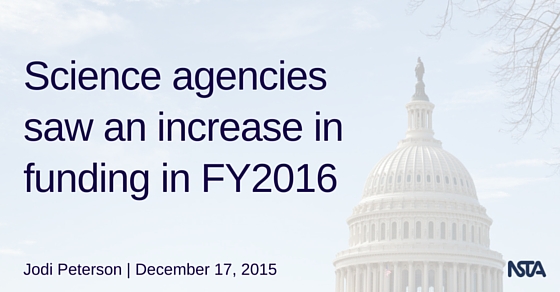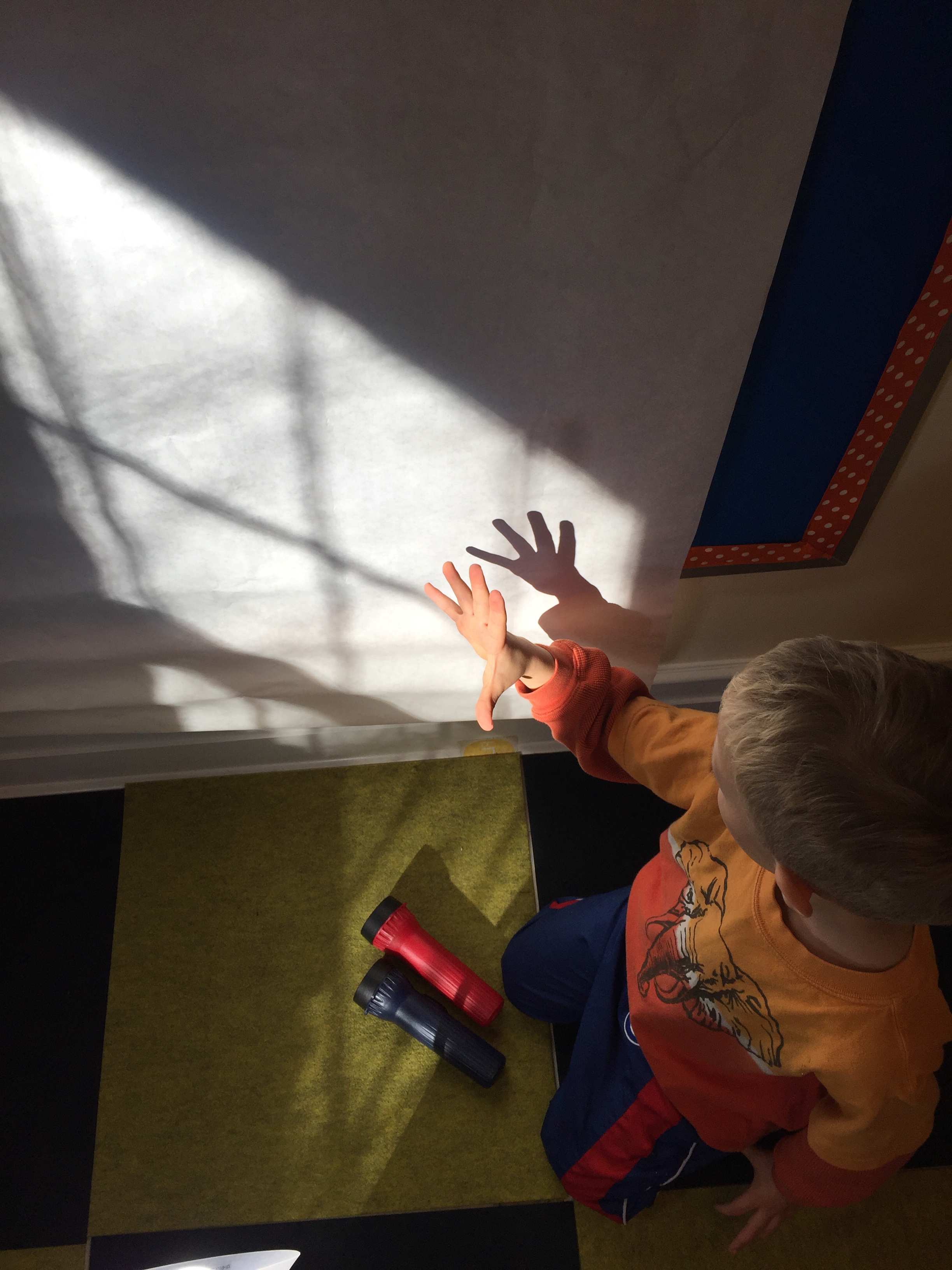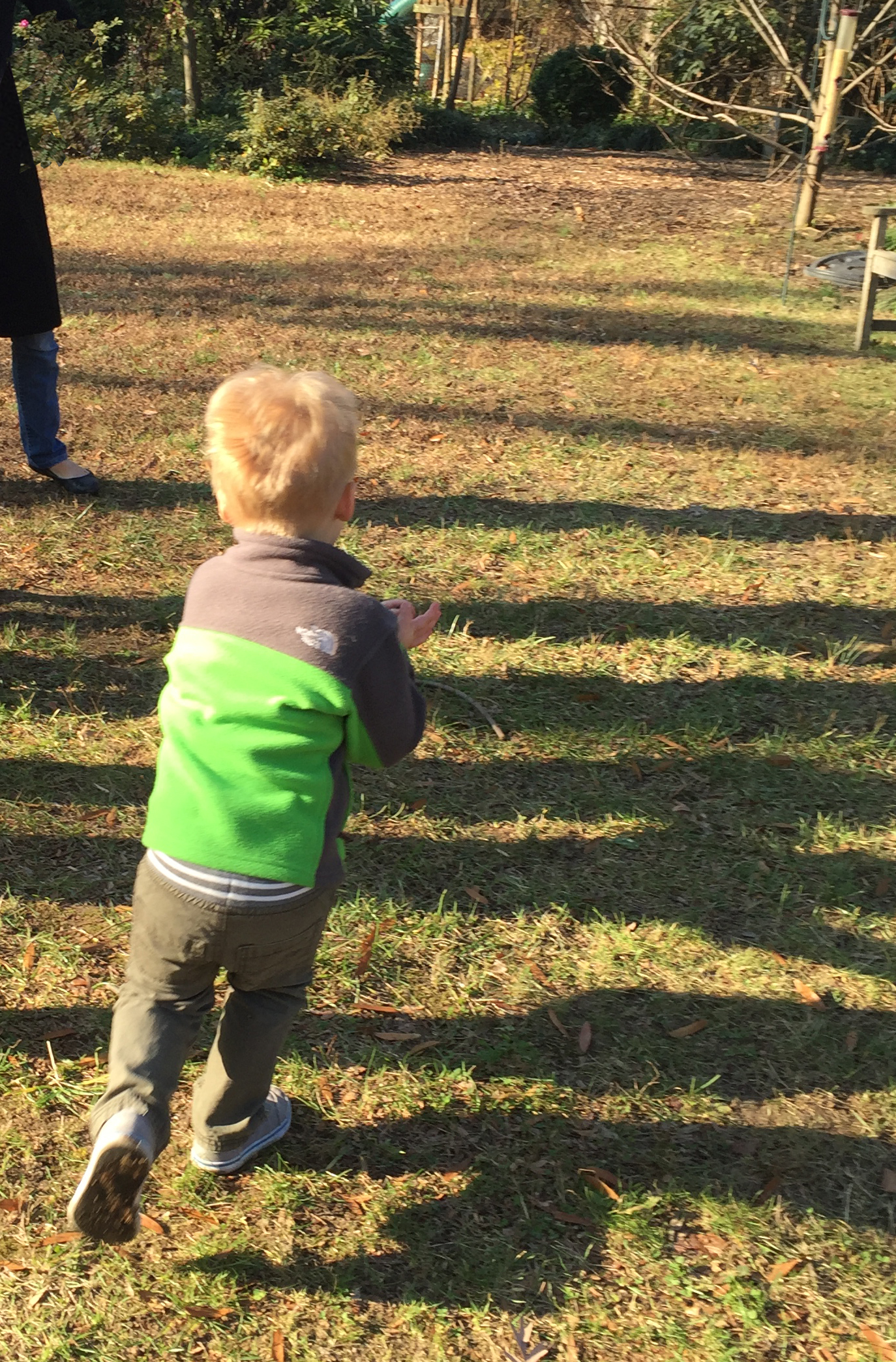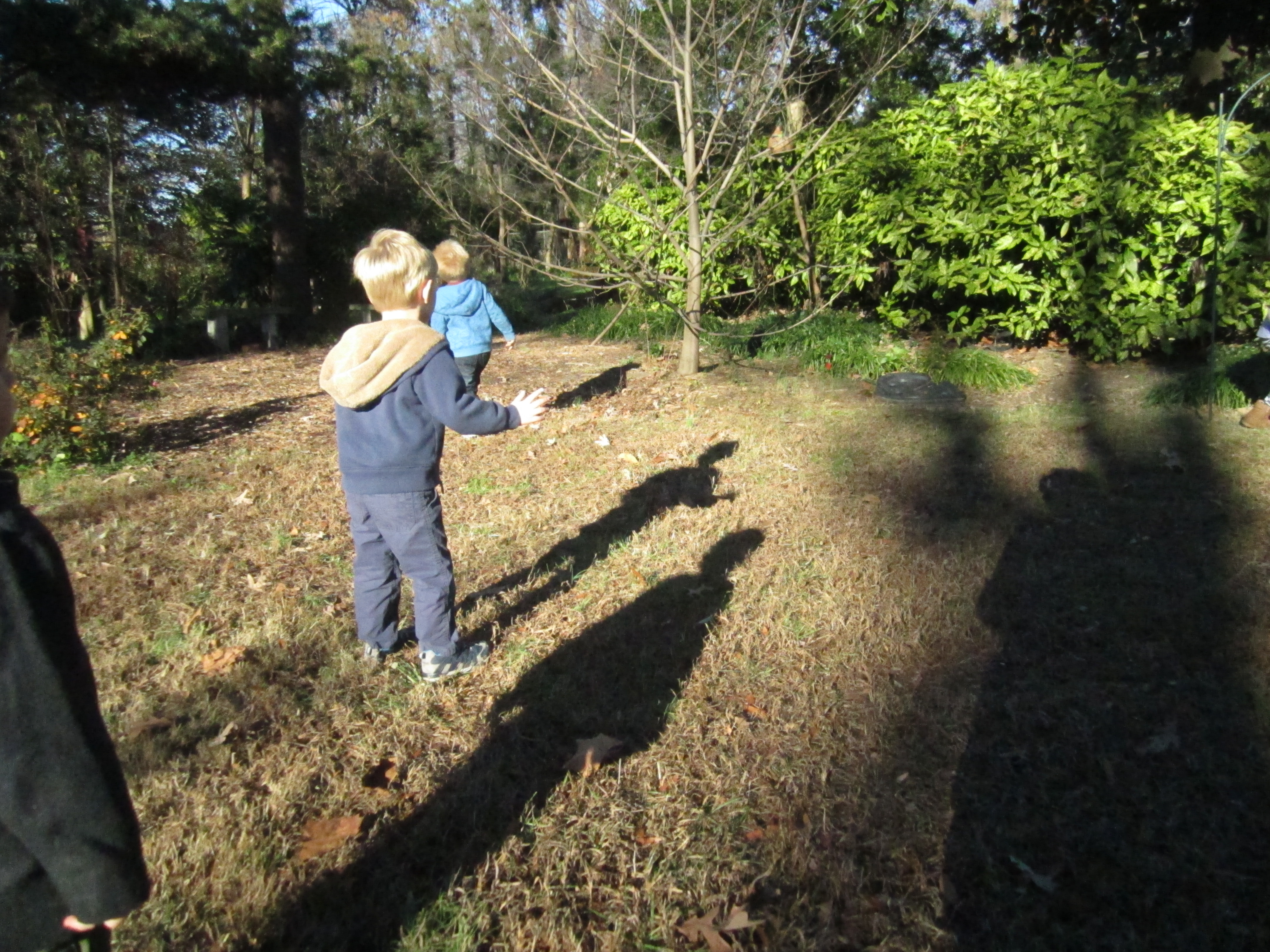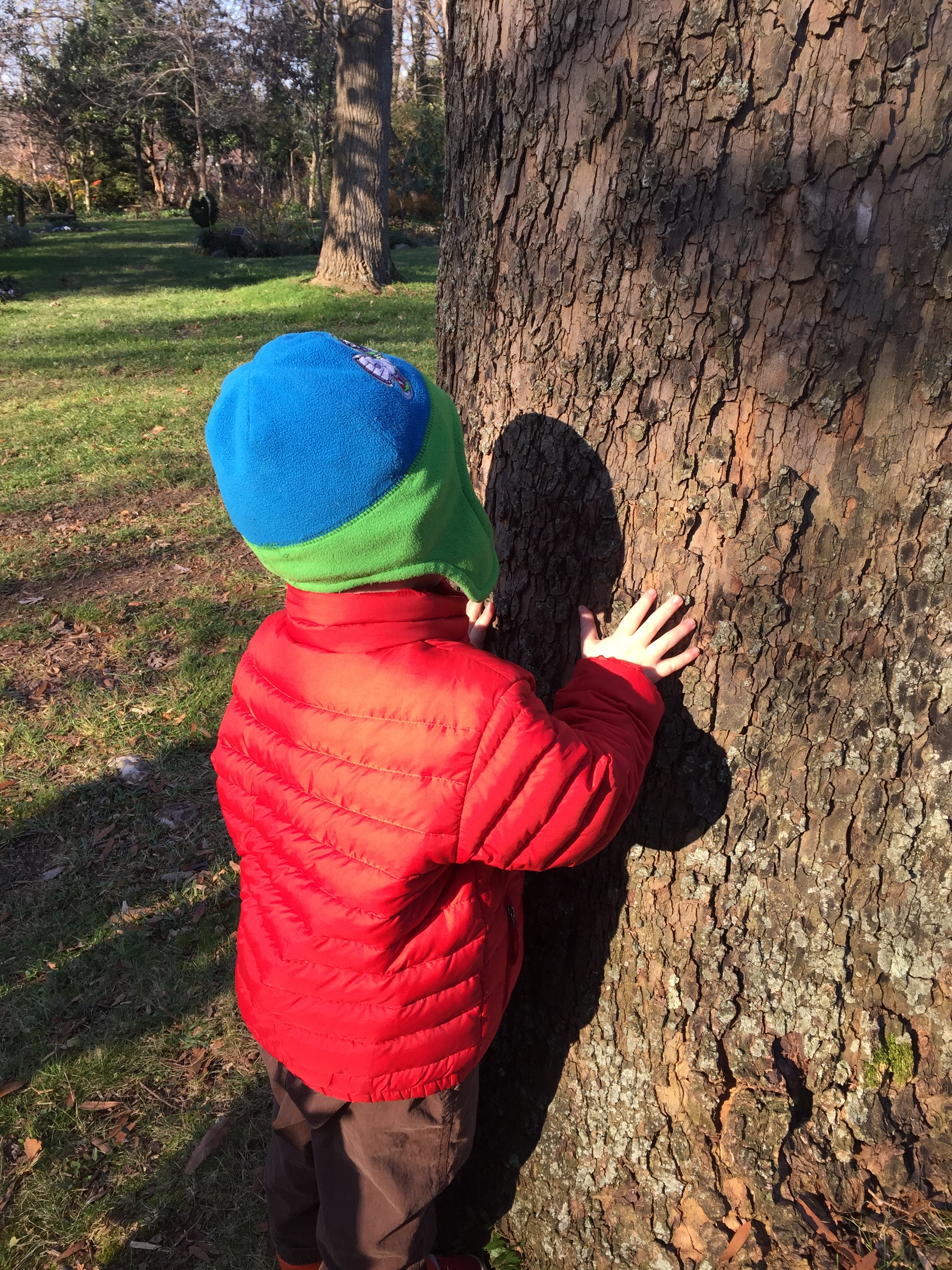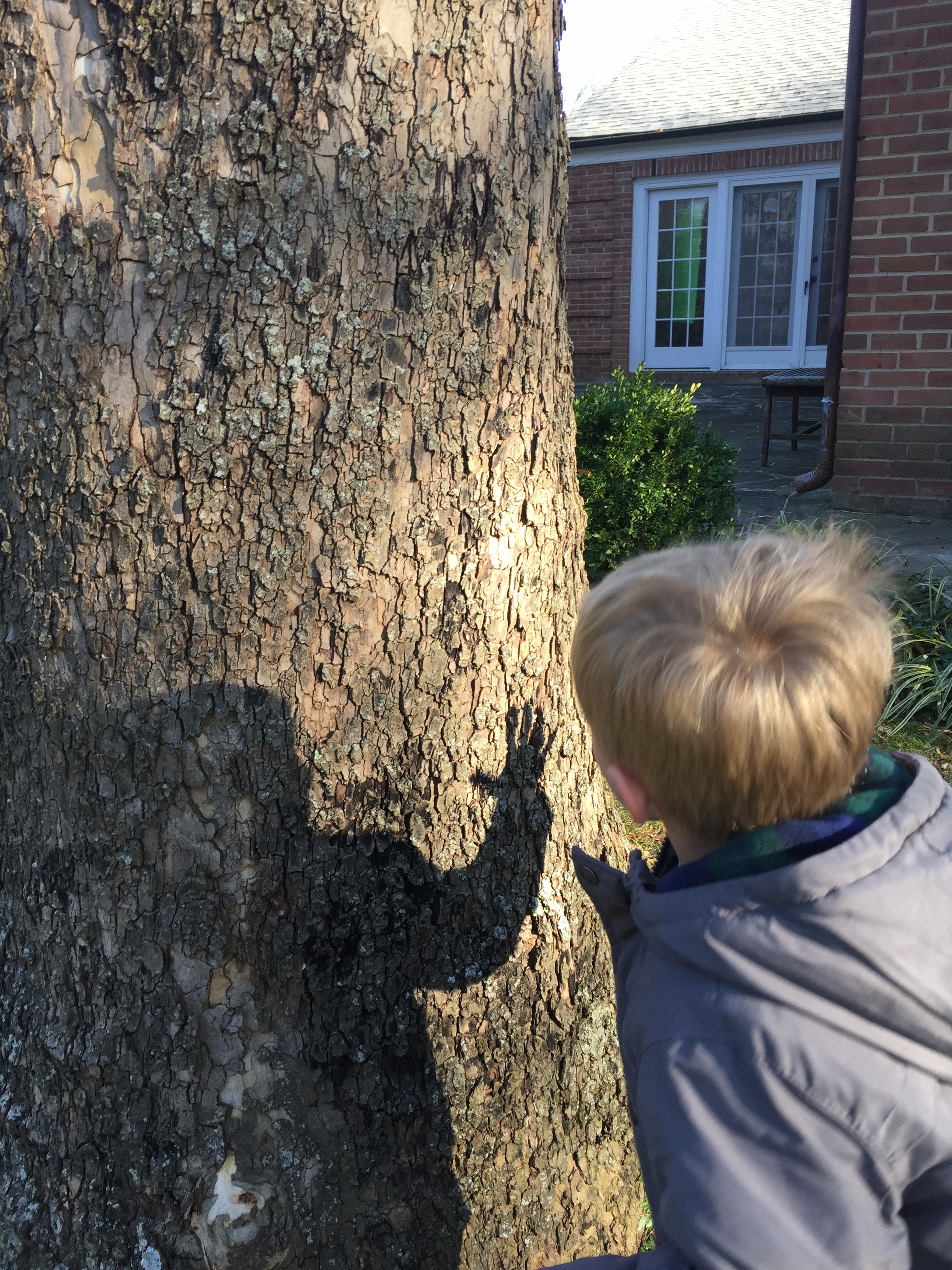Planned, Purposeful Activities
By Mary Bigelow
Posted on 2015-12-30
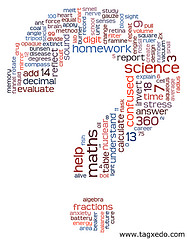 My fifth grade students get excited about hands-on activities, but sometimes they use an activity as a reason to socialize or joke around. Sometimes the class appears chaotic. I’m looking for ideas on what I can do to make sure this is a good use of time for students to learn. —F., Arizona
My fifth grade students get excited about hands-on activities, but sometimes they use an activity as a reason to socialize or joke around. Sometimes the class appears chaotic. I’m looking for ideas on what I can do to make sure this is a good use of time for students to learn. —F., Arizona
As you have observed, most students enjoy working together on investigations, projects, and activities. This excitement can get out of control, which leads to safety issues as well as students not meeting the learning goals for the activity…and perhaps the chaos that you mentioned.
Part of the issue could be addressed by classroom routines and planning, but a more fundamental thought is whether students understand the purpose of these activities and how they relate to learning.
If your students’ previous science experiences were based on worksheets or teacher-led demonstrations, they might view “fun” activities as a special event or reward for doing the worksheets, rather than an integral and essential part of learning. They also might need guidance on working cooperatively and safely.
Students should be aware of how an activity contributes to the learning goals or performance expectations. Take a few minutes to introduce or describe the activity in that context. Students will be more engaged if they have a personal ownership in the activity.
If activities are an integral part of instruction, they should not be a reward for good behavior (“Since you were really well behaved at lunch, we’ll do an activity today”) or taken away for unrelated poor behaviors (“You were noisy in the cafeteria, so no lab for you”). Some teachers have a no homework-no lab policy, but unless the homework was a preparation for the lab, this is not something I would recommend.
Doing an activity without any kind of follow-up or reflection may also contribute to students’ attitudes. My students seemed to take the activities more seriously when a “product” was required—a lab report, notebook entry, summary, photographs or video, drawing, data chart, graph, or exit slip.
In order to use class time efficiently and safely, it’s essential that you and the students have routines and procedures in place. Here are some from NSTA’s email lists and discussion forums:
- To reduce the drama of choosing partners, assign students to groups, with a promise that at some time you’ll change them. Designate a space for each team to work on activities.
- To minimize students roaming around, one of the roles in cooperative groups could be that of “coordinator” whose job is to get the materials for the activity.
- Monitor the time. Students need time to not only clean up but also to pack up their thinking. Don’t dismiss the class until the room is cleaned up and the materials are accounted for.
- Never leave the room or use this time for your own paperwork. Mingle with the groups and monitor student behavior. Use time to talk with each group, note student skills on a checklist, or ask students to describe what they’re doing and learning.
- Have a zero tolerance for unsafe behaviors. If student behaviors get out of control or become unsafe, stop the activity.
Planning and organization are also important. In your mind, go through the activity and focus on what the students should be doing to accomplish the task in an orderly and timely fashion. Can the activity be completed in one class period, or will students need to continue at another time? What is in place for students who finish ahead of time? What accommodations might be necessary for special needs students? Review any safety issues that may arise.
Have a labeled box or tray for each lab group to make it easier to organize the materials. Have these ready ahead of time for the coordinators to pick up. Include an index card in each box with an “inventory” so that at the end of the period, students knew what is to be returned. Save the cards to use the next time you do the lesson. Even though you’ll discuss any safety issues prior to the activity, you could put a summary on the card as a reminder.
As you mingle and monitor, you may find yourself spending more time near the groups who need your attention. Use an agreed-upon signal for quiet if the noise becomes distracting or chaotic. You’ll eventually learn to distinguish between off-task noise and the sounds of excited learning—the best sound ever!
A "Spring" in December
By Peggy Ashbrook
Posted on 2015-12-30

 The unusually warm December weather has brought out flowers in some of the plants that usually bloom in Spring in my area. Citizen scientists who participate in phrenology are documenting these observations. Phenology is an important subject to study, because it helps us understand the health of species and ecosystems.
The unusually warm December weather has brought out flowers in some of the plants that usually bloom in Spring in my area. Citizen scientists who participate in phrenology are documenting these observations. Phenology is an important subject to study, because it helps us understand the health of species and ecosystems.
Studying the timing of life cycle events in all living things, such as flower blooming or eggs hatching, is called phenology. The USA National Phenology Network describes it as “nature’s calendar—when cherry trees bloom, when a robin builds its nest and when leaves turn color in the fall.”
“Phenology is a key component of life on earth. Many birds time their nesting so that eggs hatch when insects are available to feed nestlings. In turn, insect emergence is often synchronized with leafing out in their host plants. For many people, allergy season starts when particular flowers bloom—earlier flowering means earlier allergies. Farmers and gardeners need to know when to plant to avoid frosts, and they need to know the schedule of plant and insect development to decide when to apply fertilizers and pesticides. Many interactions in nature depend on timing. In fact, phenology affects nearly all aspects of the environment, including the abundance, distribution, and diversity of organisms, ecosystem services, food webs, and the global cycles of water and carbon.”
Read about how children can participate and learn from phenology monitoring programs on the “Resources For K-4 Classroom Teachers” page from The USA National Phenology Network. It would be interesting for children to compare photographs of a particular tree or other plant from a particular day in previous years to the current year. My students have been observing a Paw Paw tree since October and I’ll save the photos for the 2’s and 3’s to look at next year.
Weather and environment experts, Nicholas Bond, Julia Kumari Drapkin, Richard Primack, and Noel Perry, talked with On Point‘s Tom Ashbrook (no relation that I know of) about the record high December 2015 temperatures.
The insects out in this warmer weather gave me subjects to photograph using a new 15x lens on my smart phone. I may use the lens to photograph objects children express interest in, but won’t let them handle it. I do let them use my digital camera because I learn what they are interested in as they document their observations.
- Who is eating this rose?
- A caterpillar on the underside!
- Details of a tiny insect (3mm) are revealed with a 15x lens/
I look forward to using the lens to photograph snowflakes!
Ideas and info from NSTA’s December K-12 journals
By Mary Bigelow
Posted on 2015-12-28
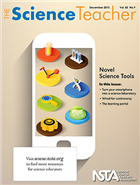 The Science Teacher: Novel Science Tools
The Science Teacher: Novel Science Tools
I once worked with a teacher who said that he would put off doing anything with technology until “things settled down.” I suspect he’s still waiting… The featured articles in this issue look at some current (as of now anyway) technologies that related to teaching and learning in science, such as mapping tools, digital probeware and sensors, and online simulations. The lessons show their connections to the NGSS.
- Wired for Controversy describes the materials and methodology used to explore ethics in autonomous systems through cyborg roaches and robotic insects. Sounds almost like science fiction!
- Turn Your Smartphone Into a Science Laboratory has several activities in which students collect and analyze data related to force and motion as al alternative to more expensive probes or monitors. We can use our phones in class!
- Where the Birds Live is another phone-enhanced activity in which students use real data and online maps to explore bird habitats, migration patterns, and biodiversity.
- Clearing the Air explores the greenhouse effect in the context of black-body radiation and Wien’s Law in a 5E lesson using online simulations.
- The Learning Portal describes a source of free classroom-tested web-based activities that use probes and models.
- Science 2.0: Did They Really Read It? Describes two online tools to assess student comprehension of reading and video resources. (See the authors’ related blog).
For more on the content that provides a context for these projects and strategies see the SciLinks websites for Acceleration, Birds, Biodiversity, Blackbody Radiation, Centripetal Force, Conduction Convection and Radiation, DNA Replication, Forces and Motion, Gravity, Greenhouse Effect, Max Planck, Migration of Birds.
Continue for Science Scope and Science and Children
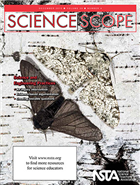 Science Scope: Science and Engineering Practices
Science Scope: Science and Engineering Practices
Assessing Science Practices: Moving Your Class Along a Continuum groups the eight science and engineering practices into three categories: investigating, sensemaking, and critiquing. The authors include an assessment tool and describe how it can be used during a lesson.
Other featured articles:
- Present, Critique, Reflect, and Refine is a four-step strategy to teach evidence-based argumentation.
- Authentic Science Investigation in the Classroom: Tools for Creating Original, Testable Questions and Graphical Hypotheses discusses the importance of asking questions and includes suggestions (such as flowcharts and inquiry boards) for helping student refine questions into testable ones.
- Argumentation and Explanation: Tools for Using Them Together While Keeping Them Separate includes graphic organizers and an example of an explanation template.
- The ICAN Intervention: Helping Science Learners Make Connections to Content During Inquiry has examples of “probes” that help students chart and reflect on their learning
- Everyday Engineering: Queuing Theory—Is My Line Always the Slowest? takes engineering concepts to the supermarket.
- Tried and True: Puff Mobile Derby Student Engineers demonstrate their learning by applying concepts from physics and engineering to the design of wind-powered vehicles.
For another engineering project, see Engineering Encounters: Creating a Prosthetic Hand from Science & Children.
For more on the content that provides a context for these projects and strategies see the SciLinks websites for Forces and Motion, Plant Growth, Plate Tectonics.
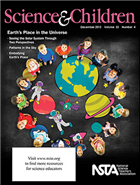 Science and Children: Earth’s Place in the Universe
Science and Children: Earth’s Place in the Universe
As always, the articles in this issue have ideas for classroom activities that align with the NGSS, along with photos of students, examples of their work, rubrics, and downloadable resources.
- Patterns in the Sky
has a 5E lesson for maximizing young students’ experiences before, during, and after a visit to a planetarium. - Seeing the Solar System Through Two Perspectives describes how a focus on learning progressions in modeling and observing patterns can help students develop their understanding of interactions between the Earth, sun, moon, and stars. (Part 2 will be published in a later issue).
- Embodying Earth’s Place in the Solar System shows how students can explore seasonal changes in how we see constellations.
- Fossil Explorers uses a 5E lesson to build on students’ curiosity about prehistoric life.
- Map That Find! has 5E lesson ideas for student archaeologists to apply their skills in observation, reasoning, hypothesis-testing, and mapping.
- Teaching Through Trade Books: Sunrise, Sunset, and Shadows has two activities with suggestions for related books in which K-2 students investigate what causes and affects shadows and 3-5 students examine the correlations between the amount of daylight and the seasons.
- The Early Years: The Earth-Sun System has ideas for younger learners as they investigate shadows.
- Formative Assessment Probes: Mountaintop Fossil: A Puzzling Phenomenon explores students’ knowledge of how fossils form and what we can learn from where they are found.
From the Science Teacher: Career of the Month: Earthquake Engineer
For more on the content that provides a context for these projects and strategies see the SciLinks websites for Archaeology, Constellations, Fossil Discoveries, Fossils, Fossil Record, Planets, Properties of Light, Seasons, Stars, Sun, Using Models in Earth Science.
 The Science Teacher: Novel Science Tools
The Science Teacher: Novel Science Tools
"Group" work in elementary science?
By Mary Bigelow
Posted on 2015-12-20
 I’m a first year teacher, teaching third grade. In my undergraduate work and student teaching, I worked with math and reading groups, but not much was mentioned about using small groups in science or social studies. I’m curious about how to go about setting up and managing group work in these subjects. —D., Washington
I’m a first year teacher, teaching third grade. In my undergraduate work and student teaching, I worked with math and reading groups, but not much was mentioned about using small groups in science or social studies. I’m curious about how to go about setting up and managing group work in these subjects. —D., Washington
In math and reading, you probably worked directly with small groups of students while the rest of the class did other activities. The small groups were structured based on student reading levels or achievements in math, and you tailored the instructional activities to meet the students’ needs.
In science and social studies, however, you’ll probably have the whole class working in groups on the same activity or rotating through a set of learning activities or stations. As the teacher, you will work with the groups as needed, but the groups will work without direct one-to-one supervision. This requires planning and organization, as well as instructions for the students on how to work safely and cooperatively.
If you do an online search for cooperative learning strategies for elementary students, you’ll find many different organizational strategies. But the literature is clear: assigning students to groups and giving them an activity is not necessarily the same as cooperative learning. It’s essential for each student to have a role in the group so they share the responsibility for learning. The roles may vary from one activity to another, but could include group leader, presenter, data recorder, measurer, equipment manager, liaison (to ask questions of the teacher or other teams), artist, online researcher, questioner, timekeeper, and notetaker.
Regardless of what roles you use, be sure that students understand their responsibilities.
These “job descriptions” could be in the form of checklists, a bulletin board display, index cards, or a page in the students’ science notebooks. The job descriptions could include mini-rubrics and conversation starters. I’ve seen teachers make “badges” for the students to wear to identify who is doing what job. Ask students to describe how they and their teammates did their jobs (this could be a exit activity). Rotate the roles so all students have a variety of experiences.
Most teachers would agree there is no “best” way to set up groups. Some teachers suggest grouping students by ability, as is often done in reading or math groups. I’m not sure how to determine science ability, especially at the third grade level, so I suspect teachers use factors such as reading or math grades, work habits, or behavior.
One option is to assign groups randomly. As the students work together, you can observe how different combinations of personalities work together: who are the leaders, the thinkers, and the creators; which students need closer supervision; which students clash; and which students struggle with the activities.
There are other student variables to consider. Depending on your observations, you may find single-gender groups provide more opportunities for equitable student participation (this was true for my seventh graders). If your class includes students with special needs, check with the special education teachers to determine their needs in terms of their individual education plans. If an activity requires a lot of reading, you may want to have a combination of reading abilities in each group.
To keep the groups focused and on-task, students should understand the expectations for the project or investigation, including any safety concerns. Monitor the groups as they work and provide feedback, listen to their discussions, and observe their interactions (this can be a formative assessment).
Some students may not have developed a high level of interpersonal skills. Start with brief and highly structured activities. Model what cooperative behavior “looks like,” and work with them on what types of language is appropriate in their groups.
Cooperative learning models also emphasize the importance individual accountability. You could have the group create some parts of a report together (perhaps in their notebooks, on chart paper, or on a online class page) and then have each student write or draw his or her own summary or conclusion. Some teachers hold each student be responsible for one part of a project, evaluating each component separately and then assigning a holistic evaluation for the entire project.
On a practical note, I found that having a color-coded box or tray for each group makes it easier to organize and count the materials and have everything is in place before going onto the next lesson.
There are times when cooperative learning is effective, times when large group instruction is appropriate, and times when you want students to work independently.
Don’t forget–teaching both science and social studies gives you an opportunity for some interesting interdisciplinary work!
 I’m a first year teacher, teaching third grade. In my undergraduate work and student teaching, I worked with math and reading groups, but not much was mentioned about using small groups in science or social studies. I’m curious about how to go about setting up and managing group work in these subjects. —D., Washington
I’m a first year teacher, teaching third grade. In my undergraduate work and student teaching, I worked with math and reading groups, but not much was mentioned about using small groups in science or social studies. I’m curious about how to go about setting up and managing group work in these subjects. —D., Washington
The Science of Art by guest blogger Carrie Heflin
By Peggy Ashbrook
Posted on 2015-12-19
Welcome to guest blogger Carrie Heflin! Carrie was a pre-k classroom educator at the Smithsonian Early Enrichment Center for four years. With everyday access to the museums on the National Mall, she developed her students’ understanding of art concepts. Her teaching put attention on the connections between artwork and science concepts. She is now the Professional Development Coordinator for the Smithsonian Early Enrichment Center and the Exhibit Coordinator for Wegmans Wonderplace at the National Museum of American History.
As early childhood educators, we are all familiar with the questions that weigh on parents’ and caregivers’ minds: How does my child’s development stack up to that of her or his peers? What should I be doing at home to help my child learn more, faster? What kind of school is best for my child?
Educators and school administrators constantly make difficult decisions regarding the quality and content of the educational experience they are able to provide for their students. We are aware that young children need sensory experiences and multiple exposures to materials to ensure that they are properly able to learn new skills and remember information. Adding more Arts-based programming into the curriculum is a logical way to accomplish these goals because art comes naturally in many forms such as painting, sculpture, literature, theater and music.
These media can engage various senses and reinforce ideas both through their more passive interactions, such as watching a play or looking at a painting, and through hands-on creation. However, the Arts are often under-utilized in school settings because proper training on their cross-curricular use is not made available to educators and funding for such trainings and programs is lacking. Many people also consider the Arts to be an intimidating field. They understandably feel ill equipped to teach using subject matters with which they are not familiar. There are some simple tips one can follow to start thinking about and using the Arts more in the classroom- regardless of subject matter or grade level.
 First, start looking for connections. Time and again we are asked to weed out any subject whose contribution toward success cannot be weighed and measured in neat letters and numbers and to cast it aside. However, as any early childhood educator can tell you without hesitation, one area of learning and development cannot be separated from another. You cannot ask whether music is more important than math because music is math. Each note represents a fraction of a measure. Each bar is the sum of its notes. Science cannot be separated from art. Every building or monument on this planet is equal parts a testament to its architect’s engineering skills and her or his creativity. Literature cannot be separated from its dramatic representation in the theater because words are meaningless unless there are people sharing them with each other.
First, start looking for connections. Time and again we are asked to weed out any subject whose contribution toward success cannot be weighed and measured in neat letters and numbers and to cast it aside. However, as any early childhood educator can tell you without hesitation, one area of learning and development cannot be separated from another. You cannot ask whether music is more important than math because music is math. Each note represents a fraction of a measure. Each bar is the sum of its notes. Science cannot be separated from art. Every building or monument on this planet is equal parts a testament to its architect’s engineering skills and her or his creativity. Literature cannot be separated from its dramatic representation in the theater because words are meaningless unless there are people sharing them with each other.

Ernesto Neto, “The Dangerous Logic of Wooing,” 2002. Installation view of “At the Hub of Things: New Views of the Collection” at the Hirshhorn Museum and Sculpture Garden, Smithsonian Institution, Washington DC, 2014. Photo: Cathy Carver
Second, apply the connections between broader subject matters to specific pieces of works of art. With very little prompting, even a young child can look at a work of contemporary art like Ernesto Neto’s The Dangerous Logic of Wooing and make the connection between a massive sculptural installation and the principles of physics. I have seen it happen through my work as an educator at the Smithsonian Early Enrichment Center (SEEC). My pre-k class went to see this piece by Neto and talked about how the way the sculpture is suspended from the ceiling is a good visual representation of the pull of gravity. I showed my class images of astronauts in space who are floating around and talked about how gravity is the force that keeps us from floating around here on earth. We don’t usually notice it, but it can be seen in the way big objects, like this sculpture, hang down when they are suspended. The curator of this museum exhibition and the artist who created the piece had to work together to develop a system for hanging it that would be strong enough to hold up the massive artwork against the force of gravity that is pulling on it.
 Then we thought about how the force of gravity affects the way our own bodies move around. We performed the basic motions of raising our arms and lifting our feet and talked about how our muscles and bones have to work against gravity just to allow us to move around. In a later lesson about muscles, we applied our experience of the force of gravity to talk about why we have to exercise and strengthen our muscles in order to perform harder tasks such as running fast or lifting heavy objects. Months later, I heard pieces of my lessons being incorporated into play scenarios where my students were talking about making their leg muscles stronger by doing a lot of running.
Then we thought about how the force of gravity affects the way our own bodies move around. We performed the basic motions of raising our arms and lifting our feet and talked about how our muscles and bones have to work against gravity just to allow us to move around. In a later lesson about muscles, we applied our experience of the force of gravity to talk about why we have to exercise and strengthen our muscles in order to perform harder tasks such as running fast or lifting heavy objects. Months later, I heard pieces of my lessons being incorporated into play scenarios where my students were talking about making their leg muscles stronger by doing a lot of running.
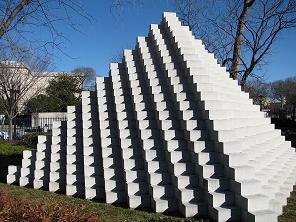
Sol LeWitt “Four-Sided Pyramid”, 1999, first installation 1997 National Gallery of Art, Washington Gift of the Donald Fisher Family. Photograph of artwork taken by Slowking4.
Creating art is also an excellent way to introduce concepts of physics and engineering. When my class was learning about ancient Egypt, we went to see Sol Lewitt’s Four-Sided Pyramid at the National Gallery of Art Sculpture Garden to encourage thinking about how the various pyramids of ancient Egypt were built. We brought plastic Lego blocks along to demonstrate some possible shapes that wouldn’t work with the building materials on hand. For instance, the children figured out very quickly that the base of the structure needed to be larger than, or at least equal to, the size of the top or it would tip over. Then we tried to create a pyramid model, working from the design of the sculpture and images of the Great Pyramids. Individual children were able to use the Lego blocks to create an object that closely resembled the sculpture, but we were unable to make a smooth-sided pyramid. The class concluded that we either, didn’t have enough blocks, or didn’t have the right kind of blocks. This kind of hands-on problem solving, inspired by a sculpture, created a lasting impression on my class. It has been over two years since our first lesson and one student still regularly teaches lessons on Egypt to his family when they come to the museums.
This is just a small example of what the Arts can add to a classroom experience. If you don’t have access to a museum or gallery on a regular basis, use technology. Th
ere are countless images available online that can help bring art to you and your students. Be creative, look for connections between art and science concepts, and remember: Art, in all its many forms, is the human representation of knowledge that gives it meaning. When we take away that meaning, we aren’t setting our children up for success. We are setting them adrift in a sea of numbers and letters without context or purpose.
Welcome to guest blogger Carrie Heflin! Carrie was a pre-k classroom educator at the Smithsonian Early Enrichment Center for four years. With everyday access to the museums on the National Mall, she developed her students’ understanding of art concepts. Her teaching put attention on the connections between artwork and science concepts.
Education Gets $1.2 Billion Increase in FY16 Omnibus
By Jodi Peterson
Posted on 2015-12-17
Earlier this week the House Appropriations Committee released the FY 2016 Omnibus Appropriations bill, which provides for discretionary funding for the federal government through the end of the fiscal year, September 30, 2016.
The bill funds the Department of Education at $68 billion, a $1.2 billion increase above the fiscal year 2015 level.
Although the program was not reauthorized in the Every Student Succeeds Act, FY16 funding for the Math and Science Partnerships was $152,717,000. Title II Teacher Quality grants were funded at $2,349,830,000 and 21st Century Community Learning Centers were funded at 1,166,673,000. Congress did not provide funding for Next Generation High Schools, a new program heavily promoted by the Obama Administration.
Title I grants to local school districts received $14.9 billion, an increase of $500 million above the 2015 level. Funding for the Individuals with Disabilities Education Act would increase by $415 million, to $11.9 billion total. See the chart of funding for FY2016 STEM federal programs.
A tax proposal would extend the teacher tax credit that allows teachers to deduct out-of-pocket classroom expenses through the end of 2016, and adjust the $250 tax credit for inflation in future years.
Overall funding for the science agencies was very positive this year. The National Science Foundation saw a modest 1.6 percent funding increase, up $119.3 million for a total budget of $7.46 billion for FY2016. NSF’s education programs received $880 million, a $14 million increase from last year. STEM+C Computer Science Partnerships Program was level funded at $57 million.
NASA saw a 7.1% increase in funding, the NOAA increase was 5.8 %, and the increase for funding for the National Institutes of Standards and Technology (NIST) was 11.6 %. The Department of Energy Office of Science received a 5.5 % increase, while funding for the DOD Science and Technology will increase 8.2%.
The House of Representatives is expected to vote on the funding package this Friday, December 18, with a Senate vote shortly thereafter. The government is currently being funded with a short term stop gap funding resolution that will expire on December 22.
What’s Next for the Every Student Succeeds Act?
What’s ahead for the new federal education law, the Every Student Succeeds Act, now that the president has signed the bill into law?
States and schools will have to transition to the new law from No Child Left Behind. The waivers to NCLB provided to states will be void by August 1, 2016, and the new federal law is expected to be in place beginning in the 2017-18 school year. Some issues in the new law will require the Department to do negotiated rulemaking, a process where representatives from the Department of Education and members from the education community meet to negotiate the terms of the new law.
Education Secretary Arne Duncan said the Department will send out guidance to states on the new law and next steps for implementation soon.
Jodi Peterson is Assistant Executive Director of Legislative Affairs for the National Science Teachers Association (NSTA) and Chair of the STEM Education Coalition. e-mail Peterson at jpeterson@nsta.org; follow her on Twitter at @stemedadvocate.
The mission of NSTA is to promote excellence and innovation in science teaching and learning for all.
Follow NSTA
Constructivist theory and its use in the Next Generation Science Standards
By Robert Yager
Posted on 2015-12-17
The people involved with the Next Generation Science Standards (NGSS) have indicated that they did not plan to “mess” with teaching goals, professional development of teachers, and the ways teachers teach which were used as headings in the 1996 National Science Education Standards (NSES). But the National Governors Association has called for improving “training” of teachers — but many professionals find the word “training” of teachers as an example of failure to indicate any teachers and their teaching as “professional.” The report focuses on career pathways without adequate evidence for achieving the reforms; nor does it suggest the need for collaboration for teachers, administrators, parents, and community leaders. Perhaps, more is needed in the New Standards than merely STEM (Science, Technology, Engineering, and Mathematics) efforts as the heart of the outline for the NGSS for all to use in 2016 and beyond?
When the NSES (1996) was released, it indicated four goals for school science to produce students who: 1) experience the richness and excitement of knowing about and understanding the natural world; 2) use of appropriate science processes and principles in making personal decisions; 3) engage in public discourse and debate about matters of scientific and technological concern; and 4) increase their economic productivity in their use of the knowledge, understandings, and skills of scientifically literate persons concerning their careers.
The teaching section of the Standards began with major ways science teaching should improve. The advocated changes were the easiest to assess and to develop (with little debate or objections). These Standards said there should be less emphasis in teaching of the following: 1) treating all students alike and responding to the group as a whole; 2) rigidly following curriculum; 3) focusing on student acquisition of information; 4) presenting scientific knowledge guided by lectures, texts, and demonstrations; 5) asking for recitation of acquired knowledge; 6) testing students regarding factual information at the end of the unit or chapter; 7) maintaining teacher responsibility and authority; 8) supporting competition; and 9) working alone.
Conversely, the Standards called for more emphasis on the following:
1) understanding and responding to student interests, strengths, experiences, and needs; 2) selecting and adapting curriculum; 3) focusing on student understanding and use of scientific knowledge, ideas, and inquiry processes; 4) guiding students in active and extended scientific inquiries; 5) providing opportunities for discussion and debates among students; 6) continuously assessing student understanding (and involving students in the process); 7) sharing responsibilities for learning with students; 8) supporting a classroom community via cooperation, shared responsibilities, and respect; and 9) working with other teachers to enhance the school science program.
Interestingly, there has been little progress to increase emphasis of these nine conditions. And unfortunately, the items that the NSES said be emphasized less remain largely unchanged with respect to the changes advocated. The Governors Association report does not seem to help with the reforms and the actual changes needed in teaching for the reforms to succeed. They ignore the Wiggins and McTighe’s recommendations for “Backward Design.” The stages in the Backward Design process are: identify desired results, determine acceptable evidence, and do both before planning learning experiences and lesson planning.
It has been 50 years since Vygotsky offered the Constructivist Learning Theory. It essentially encouraged students to construct their own interpretations of actions as they explored the environment they are in and offer their own ideas for explaining the objects and events encountered. The constructivist practices have been described as: 1) posing problems of emerging relevance to learners; 2) structuring learning around “big ideas” or primary concepts; 3) seeking and valuing varied student points of view; 4) adapting curriculum to address student involvement; and 5) assessing student learning in the context of reform teaching.
Constructivist theory influenced Carl Sagan’s statement that all humans start out as scientists who are curious, seek explanations, collaborate with others concerning questions and ideas about their current and daily lives. Constructivist practices encourage all to explore the explanations that are offered by others and encourage all to collect evidence for supporting their explanations. Yet K-12 students of science seldom accomplish better understanding of the universe. How can we get more practitioners involved in correcting the real problems with school science?
Robert E. Yager
Professor of Science Education
University of Iowa
The people involved with the Next Generation Science Standards (NGSS) have indicated that they did not plan to “mess” with teaching goals, professional development of teachers, and the ways teachers teach which were used as headings in the 1996 National Science Education Standards (NSES).
Did They Really Read It?
By sstuckey
Posted on 2015-12-16
[youtube]https://youtu.be/ThHYGzvrxZ0[/youtube]
In this video, columnist Jared Mader shares information from the Science 2.0 column, “Did They Really Read It?” that appeared in a recent issue of The Science Teacher. Read the article here.
[youtube]https://youtu.be/ThHYGzvrxZ0[/youtube]
In this video, columnist Jared Mader shares information from the Science 2.0 column, “Did They Really Read It?” that appeared in a recent issue of The Science Teacher. Read the article here.
Shadow formation and natural or electric light
By Peggy Ashbrook
Posted on 2015-12-15
At mid-December the children’s morning shadows are recognizably long. Over time, through repeated observations made formally or just in casual comments, children begin to notice that the position of the sun in the sky changes during the day. Kindergartners may notice that the sun also changes position during the year, depending on how often they are able to be outside and have a conversation about the sun’s location.
When young children begin to explore shadow formation they don’t understand the relationship between the light source and shadows. It’s interesting to see them realize that they have to place their body in the light from a source to create a shadow. Understanding that their body blocks the light comes even later.
 Challenge children to make a shadow “bigger” or “smaller,” and “longer” or “shorter,” as they play with a flashlight. By describing both a flashlight and the sun as “light sources” we help children make connections between the movement of a flashlight and the movement of the sun—movement that changes the shape and position of shadows.
Challenge children to make a shadow “bigger” or “smaller,” and “longer” or “shorter,” as they play with a flashlight. By describing both a flashlight and the sun as “light sources” we help children make connections between the movement of a flashlight and the movement of the sun—movement that changes the shape and position of shadows.
At mid-December the children’s morning shadows are recognizably long. Over time, through repeated observations made formally or just in casual comments, children begin to notice that the position of the sun in the sky changes during the day. Kindergartners may notice that the sun also changes position during the year, depending on how often they are able to be outside and have a conversation about the sun’s location.
The Paris Agreement: What Do Science Teachers Need to Know for Class on Monday?
By Lauren Jonas, NSTA Assistant Executive Director
Posted on 2015-12-12
The Paris Climate agreement is top news this weekend. Here are a few resources teachers can share with their students on Monday.
Share this tweet
Seeing the Earth from 250 miles up gives you a new appreciation for why we need to take care of it. #ParisAgreement pic.twitter.com/mGPdUKRRi7
— Mark Kelly (@ShuttleCDRKelly) December 12, 2015
Breaking from Nature News: Nations approve historic global climate accord. Agreement forged in Paris aims to hold warming “well below” 2°C.
Watch as the President Delivers a Statement on the Paris Climate Agreement
Read the New York Times article “Nations Approve Landmark Climate Accord in Paris.” This article gives a nice summary, starting with “representatives of 195 countries reached a landmark climate accord that will, for the first time, commit nearly every country to lowering planet-warming greenhouse gas emissions to help stave off the most drastic effects of climate change.”
Find the source document from the United Nations: Adoption of the Paris Agreement
Glance at the key points, from the Guardian. “The goal of 1.5C is a big leap below the 2C agreed six years ago in Copenhagen. Here’s what the agreement means for global emissions and the future of the planet.”
Get more from NSTA at our special focus site on Climate Science Resources.
The mission of NSTA is to promote excellence and innovation in science teaching and learning for all.
Follow NSTA
The Paris Climate agreement is top news this weekend. Here are a few resources teachers can share with their students on Monday.
Share this tweet
Seeing the Earth from 250 miles up gives you a new appreciation for why we need to take care of it. #ParisAgreement pic.twitter.com/mGPdUKRRi7



